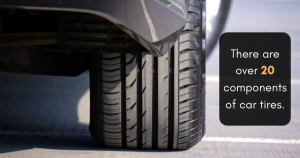Every move you make as a driver is reflected on the road by the tires. Worn out tires, therefore, put the whole vehicle and its users at risk. If you want to replace your rims or wheels and tires but you know nothing much about them, these tips can help you get started.
-
- Get Informed About Tire Basics – First, you have to understand the basic components of tires and how they work. For instance, there are over 20 components of car tires. With a proper understanding of how these components work together, you’ll be able to select the tires that work best for your vehicle and for your needs.
- Select The Right Tire For Your Vehicle – Picking the wrong size tires is one of the biggest mistakes you can make when replacing them. On each tire’s sidewall is a code which tells its size and capability. If you need off-road tires, check their outside diameter. Speed rating, traction, construction, and load rating should also put into consideration since they are a key aspect of safety.
- Identify Where To Purchase Tires – Drivers often are spoilt for choice when it comes to tire shops. A local shop is the best option if you are on a tight budget. Another option is a wholesale tire retailer who offers discounts on their tire sales. But this can be of inconvenience since you’ll have to look for replacement services elsewhere.
- Consider The Conditions You Will Be Driving In – Once you have found the right tires for you, check on what your manufacturer manual recommends, your needs/ priorities, and the load you’ll be carrying. Common questions to ask yourself include the kind of ride you need (whether soft, firm, or both). Remember your selection determines the ride quality, cost, capability, and wear.
- Understand Your Tire Technology – Tire technology has been evolving, and seemingly, it is back to the past. The earlier tires, which consisted of a very tough rubber that was durable and resistant to punctures, are back. There are conventional and run-flat tires which are constructed in different ways but serve the same purpose. Understanding these styles and your tire tech will help you make the correct choice.
- Check Fuel Economy – Not all tires can help in fuel economy. The tire you choose determines how you save costs on fuel. Putting a different tire from your previous one will impact on the fuels cost either negatively or positively.
- Carefully Check On Tread – How long your tire lasts depends on several factors like climate, how you drive, and road conditions, among others. Pick a tire that has sturdy treads to serve you for some years, even in the worst road conditions. An all-season tire will likely do the best job in this area.
- Follow the Manufacturer’s Recommendation – Each vehicle comes with a manufacturer’s instructions on tire size and types depending on different factors, as mentioned before. Manuals also have several options of custom wheels and tires that can serve you well.
With the above tips, you are sure to make a perfect replacement for your worn-out tires.


